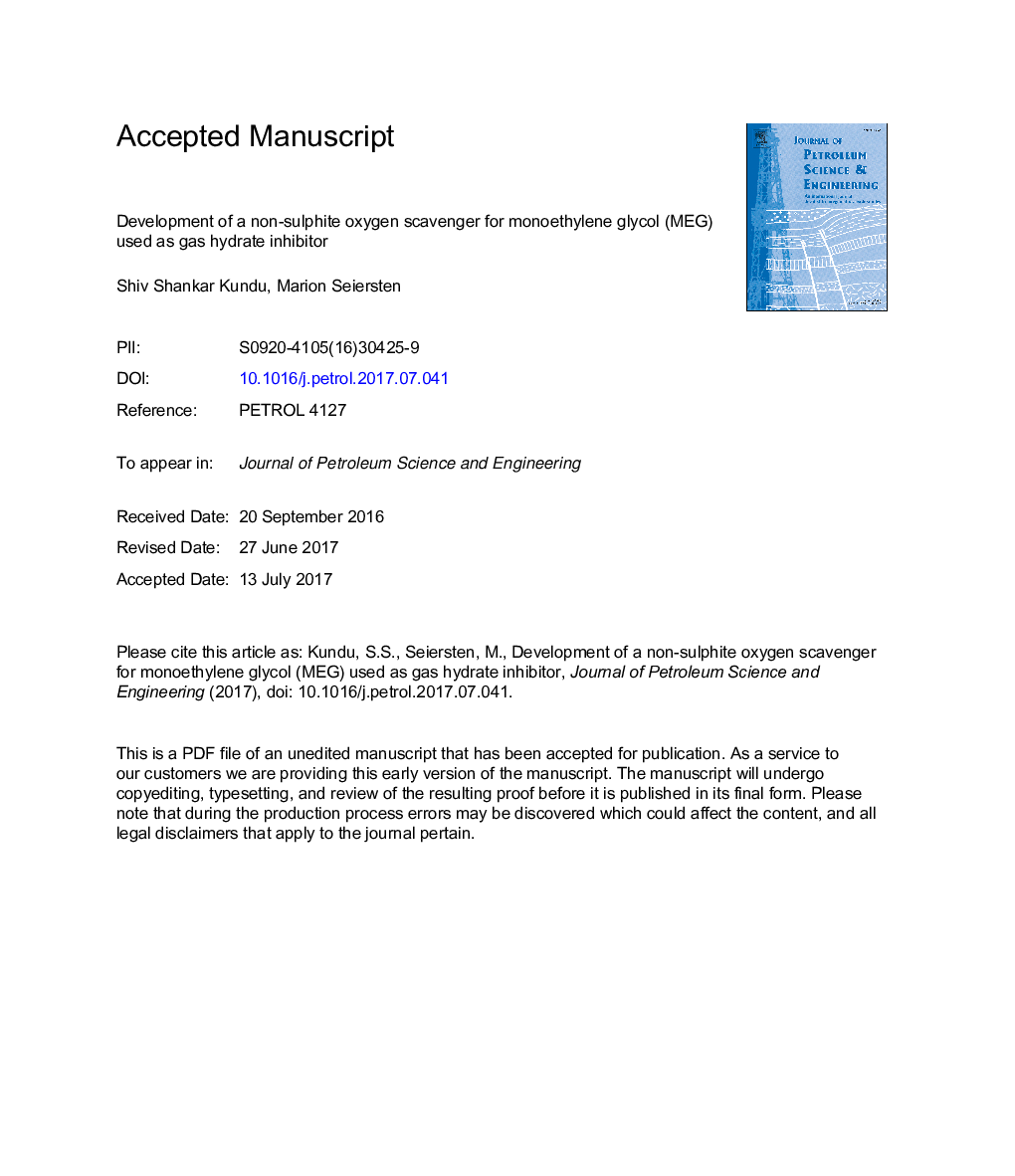| Article ID | Journal | Published Year | Pages | File Type |
|---|---|---|---|---|
| 5484039 | Journal of Petroleum Science and Engineering | 2017 | 20 Pages |
Abstract
The maximum limit for dissolved oxygen in monoethylene glycol (MEG) used as gas hydrate inhibitor is usually set to 10-20 ppb. Exposure to low quality blanket gas or leaks may lead to oxygen levels up to 1 000 ppb. Oxygen scavenging is an attractive means to reduce the concentration, but oxygen scavengers (OSs) developed for water treatment have limitations in MEG solutions. They react slowly in MEG at low temperature when the pH is less than 9 and some of them are incompatible with other production chemicals. Screening of commonly used reducing agents in lean (90%) MEG showed that erythorbic acid was more effective than the alternatives at pH approximately 8. Adding manganese (II) as a catalyst and diethylaminoethanol (DEAE) improved the performance considerably. The final OS formulation contained 17% erythorbic acid, 25% DEAE and 0.5% MnCl2. It worked well in MEG solutions at 20 and 50 °C when erythorbic acid was converted to erythorbate. When dosed to give 200 ppm erythorbate in solution, it successfully decreased the oxygen concentration from 1 000 to 10 ppb in less than 30 min. The performance was also satisfactory in lean MEG with moderate concentrations of an imidazoline based corrosion inhibitor.
Related Topics
Physical Sciences and Engineering
Earth and Planetary Sciences
Economic Geology
Authors
Shiv Shankar Kundu, Marion Seiersten,
